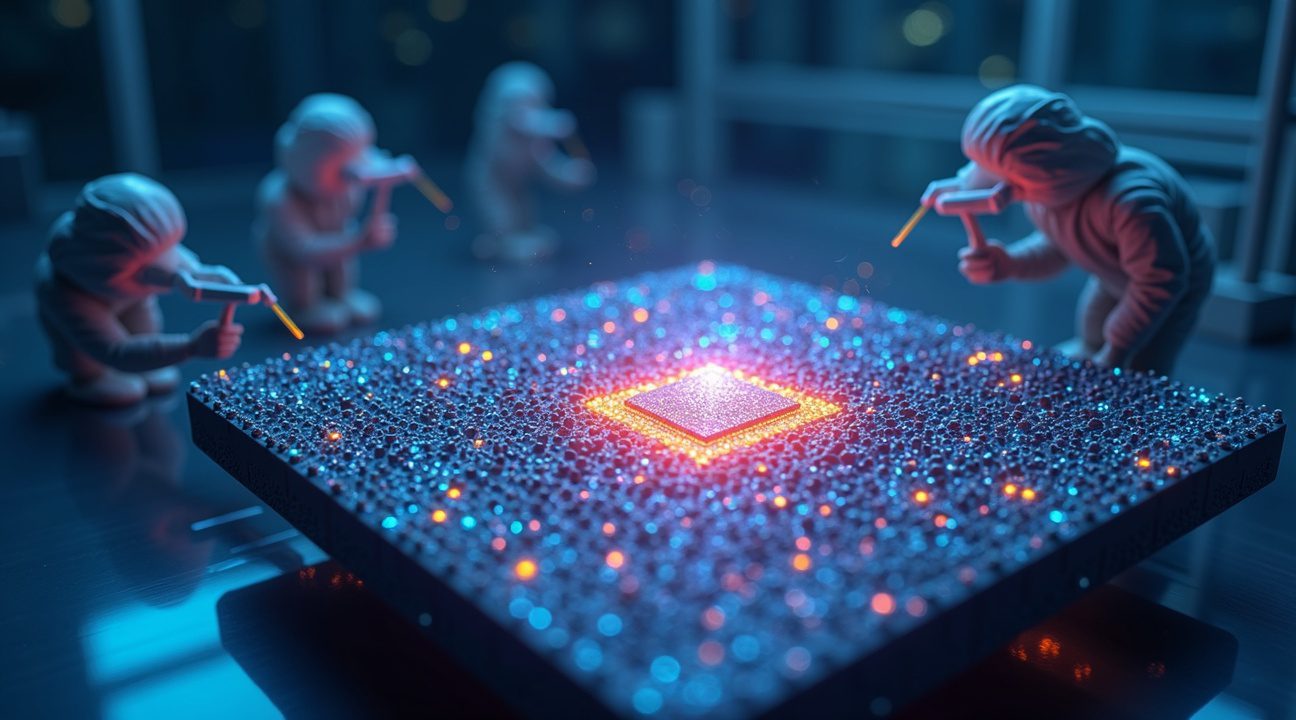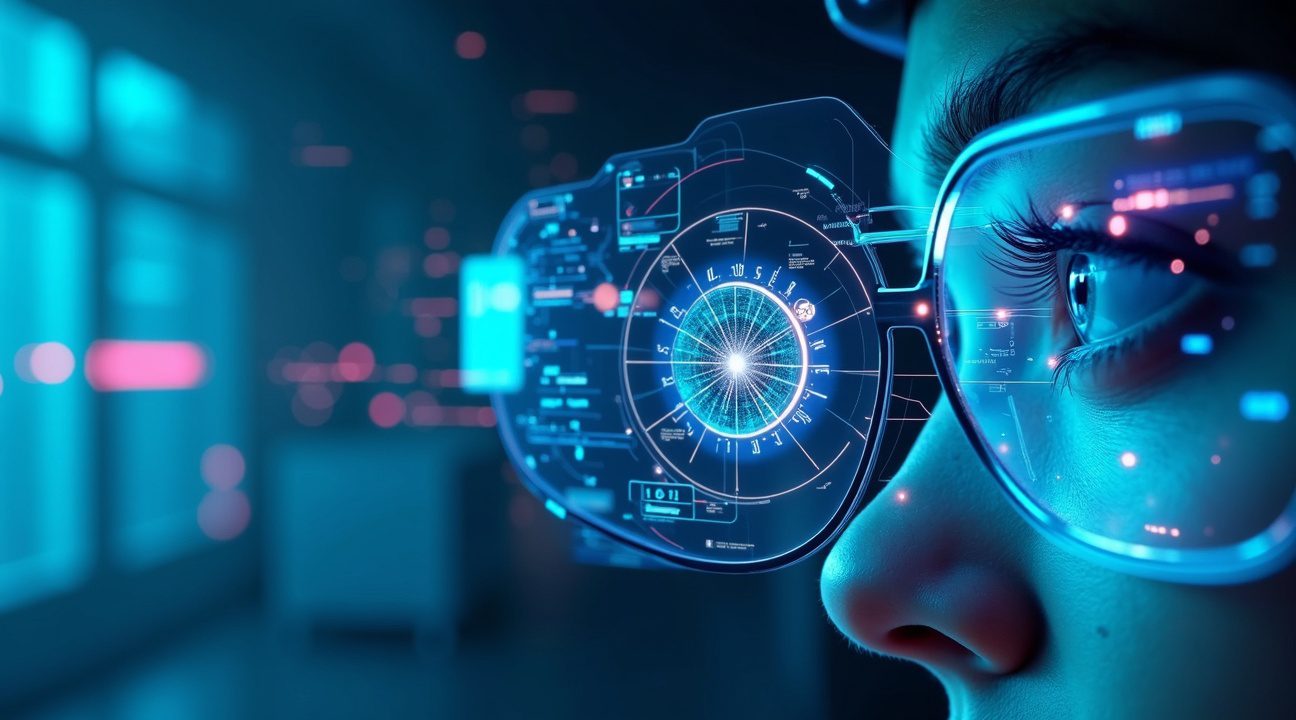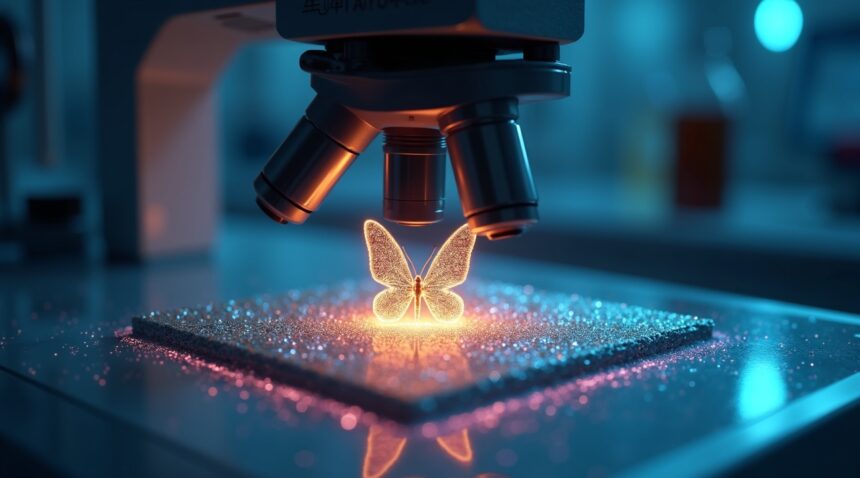Scientists have achieved a revolutionary breakthrough by creating the smallest and sharpest display ever made, reaching an unprecedented 25,000 pixels per inch resolution that matches the theoretical limits of human vision.
Retina E-Paper Display: A Technological Leap
This cutting-edge display utilizes 560-nanometer pixels, which are smaller than the wavelength of visible light. By employing advanced nanoparticle technology, it is able to produce vivid, high-resolution imagery while consuming extremely low amounts of energy.
Unmatched Resolution
The new display boasts a phenomenal 25,000 pixels per inch (PPI), aligning precisely with the spacing of human photoreceptors in the retina. This means the display reaches the visual acuity threshold of the human eye.
Groundbreaking Features
- Nanoparticle technology enables precise electrical tuning for color accuracy and contrast.
- Power efficiency remains a top feature, even at high resolutions.
- Ultra-clear visuals allow reproduction of intricate artwork like Gustav Klimt’s “The Kiss.”
- Compact size at 1.4 x 1.9 millimeters fits within a human pupil.
Potential Applications
This breakthrough opens a path to a wide array of future technologies:
- Next-generation VR headsets without screen-door effects.
- AR contact lenses delivering seamless visual overlay.
- Medical imaging devices requiring hyper-precision displays.
Impact and Industry Shift
This innovation defines the upper limit of perceptual sharpness in displays. As a result, the industry may pivot its efforts from increasing pixel density to improving color fidelity and energy efficiency—the new frontiers of visual display technology.
Revolutionary Display Achieves Ultimate Visual Limit: 25,000 Pixels Per Inch
Scientists have reached a groundbreaking milestone in display technology by creating the smallest and sharpest screen ever developed. The retina E-paper display achieves an unprecedented resolution of over 25,000 pixels per inch, effectively matching the theoretical limits of human vision. This revolutionary achievement comes from collaborative research between Chalmers University of Technology, Uppsala University, and the University of Gothenburg, with findings published in Nature.
The display’s pixels measure just 560 nanometers in size, making them vastly smaller than current micro-LED technologies available in consumer devices. To put this in perspective, these pixels are smaller than the wavelength of visible light, representing a significant leap forward in miniaturization technology. The researchers drew direct inspiration from the structure of the human retina itself, creating a display that can deliver visual information at the absolute limit of what the human eye can perceive.
Nanoparticle Technology Powers Unprecedented Resolution
The breakthrough relies on advanced nanoparticle-driven color modulation technology that enables precise control over individual pixels at the nanoscale. This approach allows the display to produce vibrant colors and sharp images while maintaining extremely low power consumption. The nanofabrication techniques developed for this project represent years of research into manipulating matter at the molecular level.
Unlike traditional displays that rely on backlighting or organic compounds, this retina E-paper uses nanoparticles to generate colors through controlled light scattering and absorption. The result is a display that can operate in bright sunlight while consuming minimal energy, similar to how artificial intelligence is revolutionizing multiple industries through innovative approaches.
Applications Beyond Current Display Limitations
The implications of this technology extend far beyond smartphones and tablets. The 25,000 ppi resolution opens possibilities for applications requiring extreme precision, including:
- Advanced augmented reality systems that seamlessly blend digital content with the physical environment
- Medical imaging devices that can display microscopic details with unprecedented clarity
- Scientific instruments requiring ultra-high resolution visualization
- Next-generation virtual reality headsets that eliminate the screen-door effect entirely
The research team’s achievement represents more than just an incremental improvement in display technology. By reaching the human visual limit, they’ve essentially solved the resolution race that has driven display development for decades. Future improvements will likely focus on other aspects like color accuracy, refresh rates, and manufacturing scalability rather than pushing pixel density even higher.
This breakthrough demonstrates how understanding biological systems can inspire technological innovation. Just as robots are becoming more adaptable through biomimetic design, display technology has now achieved perfection by emulating the human eye’s natural capabilities.
Breaking the Myth: What Your Eyes Can Actually See
I’ve always found it fascinating how misconceptions about human vision persist, especially when it comes to display technology. For decades, the accepted wisdom claimed our eyes could only resolve about 60 pixels per degree (PPD), but recent research has completely shattered this assumption.
The Real Numbers Behind Human Vision
Modern measurement techniques reveal the human eye’s true capabilities far exceed previous estimates. According to new studies, people can perceive up to 94 PPD in grayscale conditions, while red and green recognition reaches 89 PPD. However, color perception isn’t uniform across the spectrum—yellow and violet detection drops significantly to just 53 PPD.
These findings represent a dramatic shift from the old 60 PPD benchmark that manufacturers used for years. The improved measurement methods provide a more accurate picture of what our retinas can actually process, giving engineers and designers better targets for display development.
Why More Pixels Don’t Always Mean Better Vision
Understanding these perceptual limits helps explain why certain display upgrades feel underwhelming in real-world use. Consider the practical example of watching a 50-inch 8K television from 10 feet away—most viewers can’t distinguish between 1440p and 8K resolution at this distance. The pixel density already exceeds what the human eye can resolve.
This reality check has significant implications for display innovation. Manufacturers now face the challenge of improving visual quality through methods beyond simple pixel multiplication. Advances in areas like artificial intelligence processing, color accuracy, contrast ratios, and refresh rates become more valuable than cramming additional pixels into screens.
The breakthrough in creating displays that match human retinal resolution marks a crucial milestone. Engineers have essentially reached the point where further pixel density increases become visually redundant. The eye simply can’t discern additional detail beyond these newly established thresholds.
Display manufacturers must now pivot their focus from the pixel count race that dominated the industry for years. Smart engineering approaches consider:
- Viewing distance
- Screen size
- Specific visual tasks users perform
A smartphone held at arm’s length requires different optimization than a living room television or computer monitor.
The revelation about yellow and violet perception limits at 53 PPD also opens interesting possibilities for display optimization. Manufacturers could potentially allocate processing resources more efficiently, knowing that certain color ranges require less pixel density to achieve optimal visual quality.
Recent innovations demonstrate how understanding true human vision capabilities drives more targeted development. Rather than pursuing ever-higher resolutions that exceed perceptual benefits, companies can invest in technologies that enhance the viewing experience within the eye’s actual limitations.
The shift from the 60 PPD myth to scientifically validated measurements represents more than just updated specifications. It fundamentally changes how display engineers approach design challenges, ensuring future innovations deliver meaningful improvements rather than theoretical upgrades that human vision can’t appreciate.
Engineering Perfection: How Scientists Built the Ultimate Pixel
Scientists have achieved a remarkable breakthrough by creating pixels that measure just 560 nanometers—precisely matching the spacing between human photoreceptors in the retina. This extraordinary feat of engineering represents the first time researchers have successfully replicated nature’s own blueprint for visual perception at such a microscopic scale.
The entire display measures only 1.4 x 1.9 millimeters, making it roughly equivalent to the size of a human pupil. I find this dimension particularly striking because it demonstrates how engineers have compressed an entire visual system into an area smaller than most consumer displays’ individual pixels. Traditional screens pale in comparison to this level of miniaturization, which pushes the boundaries of what’s physically possible in display technology.
Revolutionary Nanoparticle Engineering
The secret behind this breakthrough lies in sophisticated nanoparticle arrangements that orchestrate color reproduction through electrical tuning. These microscopic components manipulate optical properties with unprecedented precision, allowing each submicron pixel to produce vibrant colors while consuming minimal energy. The reflective operation eliminates the need for backlighting, creating an ultra-efficient display that operates much like artificial intelligence systems—smart, adaptive, and remarkably efficient.
Unlike conventional micro-LEDs, which lose functionality and color accuracy when scaled below one micrometer, these revolutionary pixels maintain full performance even at submicron dimensions. The nanoparticle-based approach sidesteps the fundamental limitations that have plagued traditional display technologies, enabling consistent color vibrancy regardless of pixel size.
The electrical tuning capability represents another significant advancement. Instead of relying on fixed optical properties, the nanoparticles respond dynamically to electrical signals, allowing real-time adjustment of color output. This adaptive behavior mirrors how human photoreceptors respond to different wavelengths of light, creating a more natural visual experience.
Power efficiency emerges as one of the most compelling advantages of this design. The reflective display technology eliminates energy-intensive backlighting systems, while the nanoparticle modulation requires only minimal electrical input to achieve full color ranges. This combination makes the display ideal for applications where battery life and energy conservation are critical considerations.
The submicron pixel architecture opens possibilities that were previously impossible with conventional display technologies. Each pixel operates independently while maintaining perfect alignment with human visual perception thresholds, creating displays that could potentially integrate seamlessly with biological systems or provide ultra-high-resolution imaging in compact devices.
https://www.youtube.com/watch?v=RFV0p6U8nL4

Proving Perfection: Masterpieces on a Screen Smaller Than Your Pupil
I found the researchers’ demonstration absolutely breathtaking when they recreated Gustav Klimt’s “The Kiss” on their revolutionary 1.4 × 1.9 mm display. This masterpiece, along with an intricate butterfly image, appeared with such stunning clarity that visual detail became indistinguishable from reality itself. The human eye simply cannot improve what it sees on this microscopic canvas.
Breaking Physical Boundaries of Visual Perception
The sheer scale of this achievement becomes mind-boggling when I consider the numbers. This displayed artwork occupies just 1/4000th the surface area of a standard smartphone display, yet delivers unparalleled sharpness that pushes pixel density to theoretical limits. Each individual pixel on this miniature screen theoretically mirrors a corresponding photoreceptor cell in the human retina.
This breakthrough represents more than just technological advancement – it establishes the absolute physical limit for display sharpness that human vision can perceive. Scientists have essentially created a screen that matches our biological hardware pixel-for-pixel. The implications stretch far beyond tiny displays, potentially revolutionizing everything from artificial intelligence applications to medical devices.
I’m particularly struck by how this technology could transform augmented reality experiences. When displays can perfectly match human visual acuity at such microscopic scales, the possibilities for smart contact lenses and retinal implants become genuinely exciting. The precision required to recreate artistic masterpieces like “The Kiss” on such a minuscule surface demonstrates manufacturing capabilities that seemed impossible just years ago.
This development also highlights how advanced robotics and precision engineering continue pushing boundaries. The butterfly image demonstration particularly showcases the display’s ability to render complex natural patterns with perfect fidelity. Every wing scale and color gradient translates flawlessly onto the 1.4 × 1.9 mm screen.
The photoreceptor pixel matching concept fundamentally changes how I think about display technology. Rather than cramming more pixels into larger screens, scientists have achieved perfect visual matching at the cellular level. This approach could revolutionize everything from innovative engineering projects to medical imaging systems.
Future applications might include:
- Ultra-high-resolution microscopy displays for researchers studying space exploration discoveries
- Analyzing marine biology footage down to microscopic organisms
- Miniaturized displays enhancing gaming experiences through ultra-detailed graphics
This convergence of biological accuracy and display innovation marks a new era of visuals—one grounded in perfection and limited only by imagination.
From VR Headsets to Contact Lenses: Where This Technology Goes Next
This groundbreaking display technology promises to transform how we experience digital content across multiple platforms. Ultra-high-density screens with efficiency levels matching biological vision create unprecedented opportunities for immersive experiences that blur the line between virtual and physical reality.
Revolutionary Applications in Wearable Technology
Virtual reality headsets will benefit most immediately from this advancement. Current VR systems struggle with the “screen door effect,” where users can see individual pixels due to close proximity to their eyes. This new near-eye display technology eliminates that limitation entirely, delivering crisp visuals that match what the human eye naturally perceives.
Augmented reality glasses represent another major application area. Unlike bulky current models, these ultra-efficient screens could power sleek, lightweight frames that overlay digital information seamlessly onto the real world. The reduced energy requirements mean longer battery life and smaller power sources, making all-day wear practical for the first time.
Contact lenses embedded with display technology might sound like science fiction, but this breakthrough makes them scientifically feasible. The miniaturization and energy efficiency required for lens-mounted displays aligns perfectly with what researchers have achieved. Such devices could provide heads-up displays directly in a person’s field of vision without any external hardware.
Body-embedded devices present the most futuristic application. Artificial intelligence combined with these ultra-small displays could create implantable systems that project information directly onto the retina or integrate with neural interfaces.
Industry Standards and Manufacturing Impact
This technology establishes a new benchmark for display manufacturers worldwide. Traditional metrics focused on pixel density become less relevant when screens can match human visual acuity perfectly. Instead, manufacturers must now prioritize perceptual relevance – how well displays replicate what the eye and brain naturally process.
Video coding standards will require complete overhaul to support these advanced displays. Current compression algorithms weren’t designed for screens with such precision, creating opportunities for companies that can develop next-generation encoding systems. Content creators will need new tools and techniques to produce material that takes full advantage of this enhanced visual fidelity.
Energy efficiency becomes the primary competitive differentiator as resolution reaches biological limits. Companies that can deliver the same visual quality while consuming less power will dominate the wearable technology market. This shift from raw performance to intelligent efficiency mirrors trends in other tech sectors.
Gaming and entertainment industries stand to benefit enormously from widespread adoption. Developers can create experiences with unprecedented realism, knowing that their content will display exactly as intended across all compatible devices. The technology removes the hardware limitations that currently force compromises in visual design.
Medical applications offer another significant market opportunity. Surgeons could access real-time patient data through AR displays during operations, while patients with vision impairments might use enhanced contact lenses to improve their sight. The precision and safety requirements in healthcare demand exactly the kind of reliability this new display technology provides.
Manufacturing costs will initially limit adoption to premium applications, but economies of scale should drive prices down rapidly. Early adopters in professional and medical fields will subsidize development costs, making consumer applications more affordable within a few years.
The display industry must now reconsider fundamental assumptions about screen design and optimization. Rather than chasing ever-higher pixel counts, engineers can focus on:
- Improving color accuracy
- Enhancing response times
- Reducing power consumption
— all while maintaining visual quality that matches human perception. This represents a fundamental shift in how the industry approaches product development and creates opportunities for innovative solutions that prioritize user experience over technical specifications.

Sources:
Tom’s Hardware – Scientists Claim You Can’t See the Difference Between 1440p and 8K at 10 Feet in New Study on the Limits of the Human Eye
TechXplore – Ultra HD TV: Is It Worth It? Scientists Weigh In
Bioengineer.org – Minimal Pixels Deliver Peak Resolution Perceptible to the Human Eye
Knowridge Science Report – World’s Smallest Pixels Achieve the Sharpest Display Ever Seen by the Human Eye
Nature – Article: s41467-024-54306-4
Insurance Khabar – European Scientists Make Breakthrough in Pixel Technology Equivalent to the Human Eye
Perplexity.ai – Scientists Create Smallest Pixels Ever Matching Human Eye Resolution


